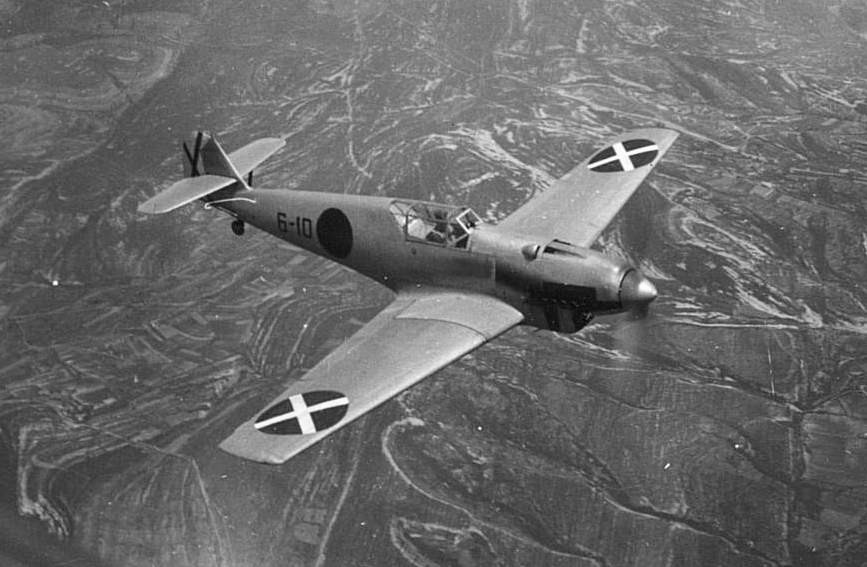You are using an out of date browser. It may not display this or other websites correctly.
You should upgrade or use an alternative browser.
You should upgrade or use an alternative browser.
Photos from Featherston's Confederacy/ TL-191
- Thread starter Alternatehistoryguy47
- Start date
-
- Tags
- the rising sun
I haven't read the books in several years.The Confederate Naval Academy was at Mobile, not Charleston. It was mentioned in the series several times.

A photo of Bletchley Park, circa 2019. During the Second Great War, the Mosley Government and the British Armed Forces would establish an intelligence center within the walls of this mansion, it was were where the Radius conducted their Intelligence War.
-----------------------------
Edit: I plan on making a post here about the Intelligence War in the world of TL-191.
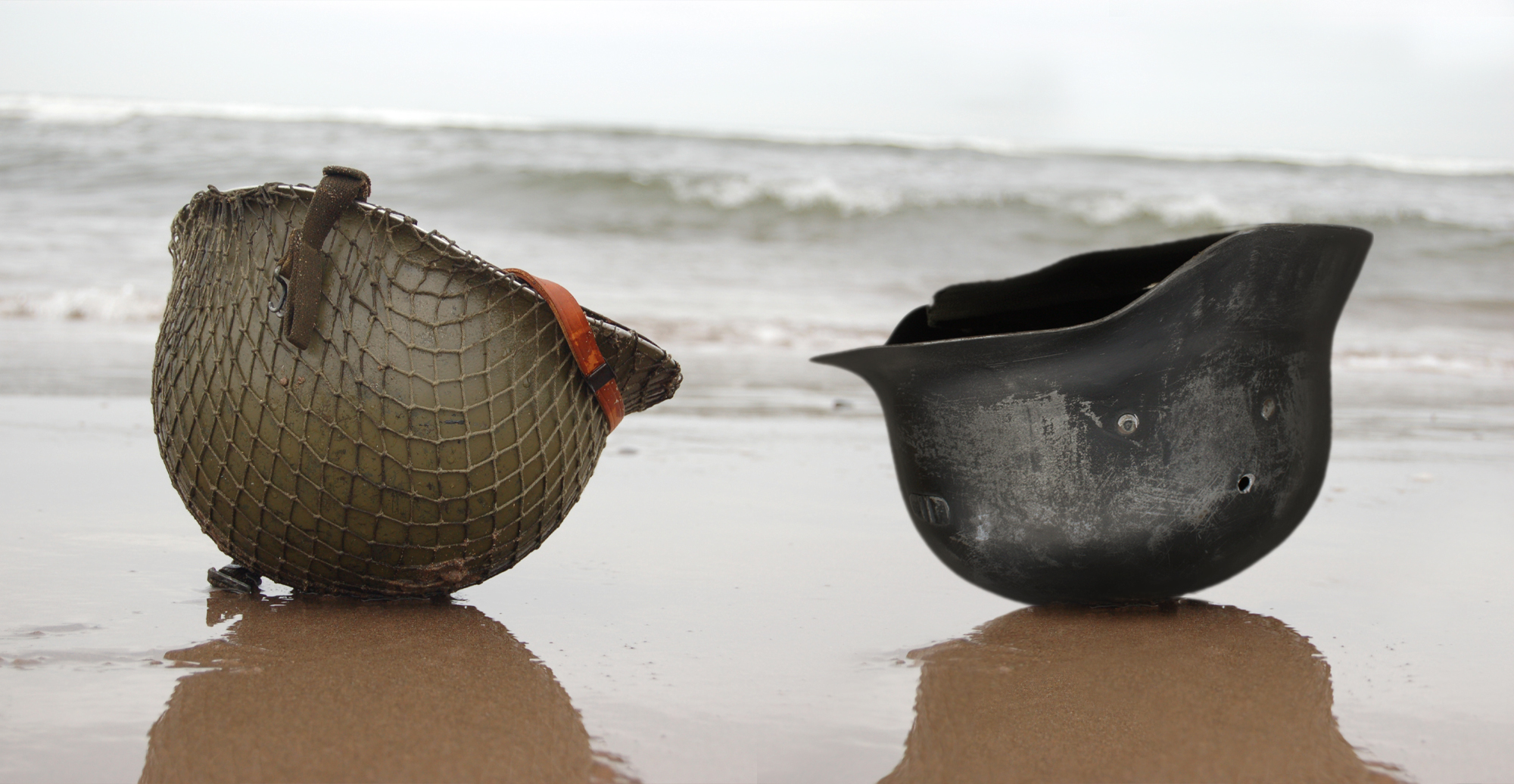
A Confederate Sydenham Helmet next to an American M1941 Steel Helmet on the shores of the Delmarva Peninsula
After recapturing Bermuda from the Confederates and British & regaining the Delmarva peninsula, General Daniel MacArthur had wanted to invade Virginia's eastern coast but was not allowed to by the U.S. War Department. The Super-bombing of Newport News further disinterested the U.S. army from performing any land invasion of Virginia.

Confederate soldier holding a modified Tredegar Automatic Rifle.
This version of the TAR mostly existed as prototypes until they were given to the most elite units of the Confederate military. Some were captured by U.S. soldiers around the Confederacy and used against C.S. soldiers.
Last edited:
Intelligence War, Espionage, and Spies of TL-191, Part 1
/https://public-media.si-cdn.com/filer/f5/95/f59548db-c8c7-47a0-8404-9e44cd4b8db6/enigma.jpg)
A photograph of an Enigma Machine, which was the primary coding machine that was used by the Central Powers during the Second Great War, including the American version of the machine dubbed the Prophet Machine.

A photo of Captain Maksymilian Ciężki, circa 1935. Ciężki was part of the Polish Army Cipher Bureau, which his had caught the attention of the Germans after his Bureau cracked the Enigma Code and was made head of a Joint Polish-German (and later Austro-Hungarian and Union) Cipher Group known as Department 14. The work of Department 14 and waged an Cipher War against the Radius Alliance to both protect the Enigma Code and also to crack the enemy code which was known as the Genie Cipher. It was the efforts of Ciężki's Department 14 which had contributed, perhaps decisively, in the Defeat of the Radius Alliance in Europe and possibly the CSA.

Women belonging to the US Navy's Special Signals Department working feverishly to break the Allied Anglo-Confederate Naval Codes, circa 1942. In a combination of these women's efforts and the capture of a Genie Machine and it's codebooks off the British Submarine HMS Tutankhamen in the North Atlantic by the Union Navy, the Union was able to crack the enemy codes, which had immensely helped the turned the tide of the Battle of the Atlantic into Central Powers' favor.
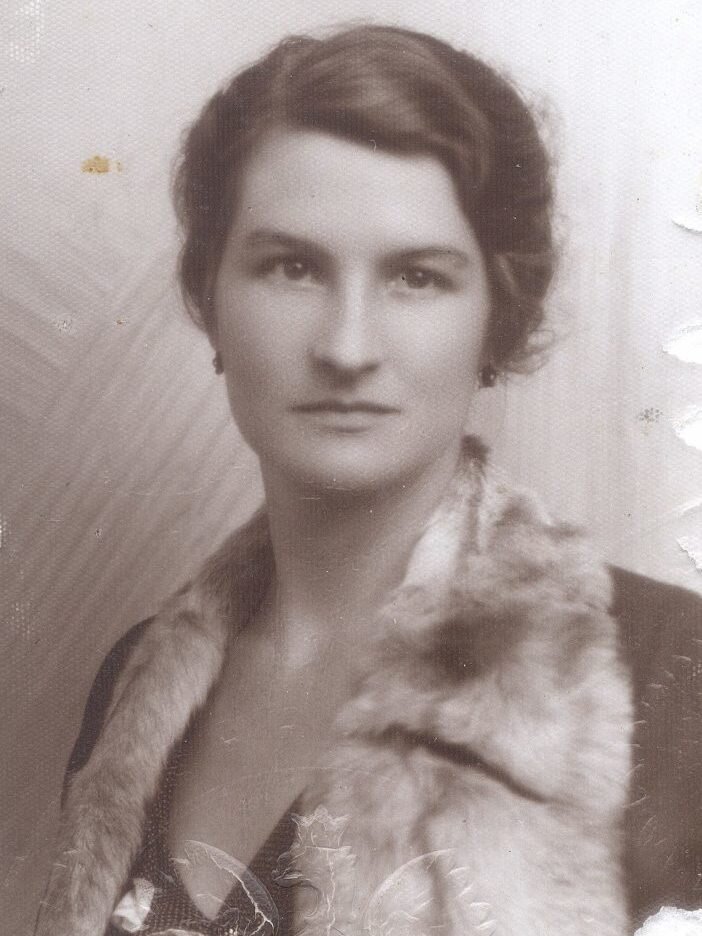
A pre-war photo of Virginia Hall, circa 1939. During the Second Great War, Virginia Hall would be an agent for the Union Military's Intelligence Organization known as the OSS (which stands for the Office of Strategic Services), in which would operate heavily in Featherston's Confederacy posing as originally a War Corespondent (under the pseudonym of Rosa Forester) for the Confederate Propaganda Machine. Hall would play a crucial part in the Union Victory during the Second Great War by providing information about the Confederate Military's Troop Movements, their weapons development, and also revealed to the Union High Command of details regarding to the Population Reduction. Her greatest contributions was when she revealed information to the Union High Command about General Patton's intended operation in Tennessee in late 1943. Shortly afterwards, the Freedom Party Guards and it's Security Department would find out about her and would commit to a massive man-hunt for her. However, Hall would never be caught by the Freedomites despite a high bounty on her head. After war's end she would awarded the Distinguished Service Cross from the head of the OSS General William Donovan.

A photo of a High Standard OSS Pistol from the Rock Island Auction catalog, circa 2017. This pistol would be the mainstay pistol for Union saboteurs, commandos, and spies during the Second Great War.
/https://public-media.si-cdn.com/filer/f5/95/f59548db-c8c7-47a0-8404-9e44cd4b8db6/enigma.jpg)
A photograph of an Enigma Machine, which was the primary coding machine that was used by the Central Powers during the Second Great War, including the American version of the machine dubbed the Prophet Machine.

A photo of Captain Maksymilian Ciężki, circa 1935. Ciężki was part of the Polish Army Cipher Bureau, which his had caught the attention of the Germans after his Bureau cracked the Enigma Code and was made head of a Joint Polish-German (and later Austro-Hungarian and Union) Cipher Group known as Department 14. The work of Department 14 and waged an Cipher War against the Radius Alliance to both protect the Enigma Code and also to crack the enemy code which was known as the Genie Cipher. It was the efforts of Ciężki's Department 14 which had contributed, perhaps decisively, in the Defeat of the Radius Alliance in Europe and possibly the CSA.

Women belonging to the US Navy's Special Signals Department working feverishly to break the Allied Anglo-Confederate Naval Codes, circa 1942. In a combination of these women's efforts and the capture of a Genie Machine and it's codebooks off the British Submarine HMS Tutankhamen in the North Atlantic by the Union Navy, the Union was able to crack the enemy codes, which had immensely helped the turned the tide of the Battle of the Atlantic into Central Powers' favor.

A pre-war photo of Virginia Hall, circa 1939. During the Second Great War, Virginia Hall would be an agent for the Union Military's Intelligence Organization known as the OSS (which stands for the Office of Strategic Services), in which would operate heavily in Featherston's Confederacy posing as originally a War Corespondent (under the pseudonym of Rosa Forester) for the Confederate Propaganda Machine. Hall would play a crucial part in the Union Victory during the Second Great War by providing information about the Confederate Military's Troop Movements, their weapons development, and also revealed to the Union High Command of details regarding to the Population Reduction. Her greatest contributions was when she revealed information to the Union High Command about General Patton's intended operation in Tennessee in late 1943. Shortly afterwards, the Freedom Party Guards and it's Security Department would find out about her and would commit to a massive man-hunt for her. However, Hall would never be caught by the Freedomites despite a high bounty on her head. After war's end she would awarded the Distinguished Service Cross from the head of the OSS General William Donovan.

A photo of a High Standard OSS Pistol from the Rock Island Auction catalog, circa 2017. This pistol would be the mainstay pistol for Union saboteurs, commandos, and spies during the Second Great War.
Last known image of Dr. Francois Duvalier (right) with an unknown colleague (left)
During the Second Great War, the Confederacy invaded Haiti and began to indiscriminately eradicate the Black population. In the previous war, it was merely occupied to prevent the United States to keep a foothold in the Caribbean.
A U.S.- educated Haitian doctor by the name of Francois Duvalier was involved in a series of battles against the Confederates, where he acted as a soldier and a medic. The risk of capture was elevated when Dominican troops under Trujillo agreed to invade the country during Operation Blackbeard in return for some financial compensation and potentially gaining the rest of Hispaniola (the latter promise was somewhat of a tongue-in-cheek statement said by Featherston)
Duvalier was captured and turned over to the Confederate army in 1943 and burned alive, on the reasoning that a bullet was more valuable to use on the Americans once they started to regain Haiti.
Dam that was messed up.View attachment 547667
Last known image of Dr. Francois Duvalier (right) with an unknown colleague (left)
<>
Duvalier was captured and turned over to the Confederate army in 1943 and burned alive, on the reasoning that a bullet was more valuable to use on the Americans once they started to regain Haiti.

Malcolm Little, Black rights activist and formerly a Private in the US Army, photographed in 1957.
Little rose to prominence when he was in the Army during the Second Great War, when he, in a moment famous in US history, first raised the US flag over the ruins of the Confederate Congress building following the Battle of Richmond, with his famous declaration of "Reduce This!" as he impaled the US flag through the fallen Freedom Party banner becoming a rallying cry for Black Rights activists following the revelation of the full scale of the Freedom Party's atrocities. In the aftermath of the War, as the re-integration of the South began and race relations became an unavoidable issue, Little used his famous status in a series of powerful speeches in communities across the north, Culminating in a famous speech before the newly-built "Roosevelt Column" in Washington DC, where, in his famous "I Have Faith" speech, he called upon the leaders of the USA to "Live up to the Truths that are Self-Evident, that ALL MEN are created Equal."
Arguing for equality and integration rather than Black supremacy as other, more radical speakers had been since before the war, Little was a controversial figure in both white and black political circles. His rhetoric and attitude made him a target of white supremacists in both the north and the south, and several attempts were made on his life during the course of his time as a speaker. The last of these, in 1968, would be successful, as several Freedom Party Guards veterans would ambush Little and an entourage of followers outside their hotel in Memphis. Shot three times in the chest, Little would die the following morning, where the Coroner would famously proclaim "you people, Behold a Martyr."
His funeral in his home city of Omaha, Nebraska, was attended by over 15,000 people, among them Retired General Irving Morrell, then-General of the Army Micheal Pound and, to the surprise of many, former CSA intelligence chief Clarence Potter.
Last edited:
A photograph of Lulu Mattox (who was Featherston's personal secretary) reading an excerpt of the book Gone With The Wind out loud to everyone present while at Featherston's private retreat (which was known as the cottage by Featherston's inner circle) along the coast of Albemarle Sound in North Carolina, circa 1939.
Last edited:

Photograph of an anti-evolution book sale during 1930's Richmond, moments before the Freedom Stalwarts literally broke it up.
Led by Thomas Theodore Martin, an evangelical activist-later-turned-political prisoner, the introduction of the scientific theory of Evolution was not popular throughout the Confederacy and some leaders, both religious and secular, had some doctrinal and/or moral concerns about it being allowed to be taught in schools. Individual states eventually made their own laws towards the teaching of Evolution. In some states, it was entirely banned, while in others, it could only be taught at the university level. Cuba, Sonora, Chihuahua, and Louisiana were known to have lenient laws compared to the rest of the Confederacy due to a higher Catholic population that had little to no problems with Evolution.
When Featherston became president in 1934, he met a group of Confederate intellectuals, some of which were former members of the Radical Liberal Party, who introduced him to the concept of materialist philosophies, including Social Darwinism, Scientific Racism, and a strict atheistic interpretation of Evolution. Featherston himself was already a lapsed Baptist by the start of his presidency and was initially drawn to these ideas. While he did express private skepticism about the veracity of some ideas, he nevertheless allowed these people to become high-ranking members of the Confederate Freedom Party and worked closely with Saul Goldman, the Director of Communications of the CSA.
Featherston's favorite concept was that of Evolution, which he made required learning in all levels of education throughout the CSA. A major reason as to why he wanted to make Evolution a state-enforced educational course was that it appeared to prove the idea that Whites were the most evolved type of human, compared to Blacks who were thought of to be more related to that of brute animals. Despite not being sure if Evolution was actually true or not, he noted that it was a useful propagandistic tool to subjugate and eliminate Blacks in the CSA.
Decades after the end of the Confederacy, there still exists a hesitant, if not a staunch refusal , acceptance of Evolution as a fact in the United States among the small Black population. While most of the African-American community is secular, a vast majority of Blacks (mostly from older generations) still refuse to believe in Evolution as true science due to its ideological use against them during Featherston's Confederacy.
Last edited:
Very interesting update and a unique take on the Evolution controversy.
Photograph of an anti-evolution book sale during 1930's Richmond, moments before the Freedom Stalwarts literally broke it up.
Led by Thomas Theodore Martin, an evangelical activist-later-turned-political prisoner, the introduction of the scientific theory of Evolution was not popular throughout the Confederacy and some leaders, both religious and secular, had some doctrinal and/or moral concerns about it being allowed to be taught in schools. Individual states eventually made their own laws towards the teaching of Evolution. In some states, it was entirely banned, while in others, it could only be taught at the university level. Cuba, Sonora, Chihuahua, and Louisiana were known to have lenient laws compared to the rest of the Confederacy due to a higher Catholic population that had little to no problems with Evolution.
When Featherston became president in 1934, he met a group of Confederate intellectuals, some of which were former members of the Radical Liberal Party, who introduced him to the concept of materialist philosophies, including Social Darwinism, Scientific Racism, and a strict atheistic interpretation of Evolution. Featherston himself was already a lapsed Baptist by the start of his presidency and was initially drawn to these ideas. While he did express private skepticism about the veracity of some ideas, he nevertheless allowed these people to become high-ranking members of the Confederate Freedom Party and worked closely with Saul Goldman, the Director of Communications of the CSA.
Featherston's favorite concept was that of Evolution, which he made required learning in all levels of education throughout the CSA. A major reason as to why he wanted to make Evolution a state-enforced educational course was that it appeared to prove the idea that Whites were the most evolved type of human, compared to Blacks who were thought of to be more related to that of brute animals. Despite not being sure if Evolution was actually true or not, he noted that it was a useful propagandistic tool to subjugate and eliminate Blacks in the CSA.
Decades after the end of the Confederacy, there still exists a hesitant, if not a staunch refusal , acceptance of Evolution as a fact in the United States among the small Black population. While most of the African-American community is secular, a vast majority of Blacks (mostly from older generations) still refuse to believe in Evolution as true science due to its ideological use against them during Featherston's Confederacy.

Malcolm Little, Black rights activist and formerly a Private in the US Army, photographed in 1957.
Little rose to prominence when he was in the Army during the Second Great War, when he, in a moment famous in US history, first raised the US flag over the ruins of the Confederate Congress building following the Battle of Richmond, with his famous declaration of "Reduce This!" as he impaled the US flag through the fallen Freedom Party banner becoming a rallying cry for Black Rights activists following the revelation of the full scale of the Freedom Party's atrocities. In the aftermath of the War, as the re-integration of the South began and race relations became an unavoidable issue, Little used his famous status in a series of powerful speeches in communities across the north, Culminating in a famous speech before the newly-built "Roosevelt Column" in Washington DC, where, in his famous "I Have Faith" speech, he called upon the leaders of the USA to "Live up to the Truths that are Self-Evident, that ALL MEN are created Equal."
Arguing for equality and integration rather than Black supremacy as other, more radical speakers had been since before the war, Little was a controversial figure in both white and black political circles. His rhetoric and attitude made him a target of white supremacists in both the north and the south, and several attempts were made on his life during the course of his time as a speaker. The last of these, in 1968, would be successful, as several Freedom Party Guards veterans would ambush Little and an entourage of followers outside their hotel in Memphis. Shot three times in the chest, Little would die the following morning, where the Coroner would famously proclaim "you people, Behold a Martyr."
His funeral in his home city of Omaha, Nebraska, was attended by over 15,000 people, among them Retired General Irving Morrell, then-General of the Army Micheal Pound and, to the surprise of many, former CSA intelligence chief Clarence Potter.
Well, you made Malcolm X into a Grade A badass and a true hero/TL-191 Doctor King. Thank you very much for this. Even how he died, with 'Behold a Martyr' sounds very biblical.
Last edited:
The Forgotten Campaign: The True Story of the Alaskan Front during the SGW Part 1

A Union Soldier in his foxhole at a forward position in American Columbia near the border with Russian Alaska, circa 1941.
When the Second Great War commenced in North America, the Union High Command would strip many of their occupation forces from Canada to go fight the Confederate Forces in the South. However, there were a few regions of Canada where none of the Occupational Forces were stripped from such as American Columbia and the Yukon due to their proximity to Russian Alaska. Those regions would be immediately put under the Pacific Northwest Command with General Hugh Aloysius Drum as it's commander. Drum's forces were 87,000 US Army soldiers backed up an additional 12,000 US Marines 9,000 local Collaborationist Auxiliary Troops, 850 artillery pieces (much of them dating from the First Great War), 1,020 motor vehicles, 36 armored cars, 20 barrels (which were all M2A4 Light Barrels), 66 fighter aircraft (which were P-24 Hawk and the older P-16 Peashooter), 28 A-17 Nomad light bombers, and 16 coastal patrol aircraft of various types. The local naval forces in support with Task Force 36 under the command of Admiral Spruance had the new Battlecruiser USS Constellation, the heavy cruiser USS York, the light cruisers USS Saint Louis and Brooklyn, 13 destroyers, and 7 submarines.
In addition to the various ground forces, there were numerous coastal artillery batteries that were built following the Pacific War in order to protect the coastal regions of American Columbia, Vancouver Island, and Graham and Morseby Islands from a possible Japanese Invasion. Pictured here is a 14 inch gun from Fort Roosevelt on Vancouver Island, circa 1940.
Opposing the Union Military Forces was the Imperial Russian Forces of the so-called Alaskan Front commanded by General Alexi Antonov. By August of 1941, Antonov's forces had included about 105,000 troops, 761 artillery pieces, 896 motor vehicles, and 54 armored cars along with 54 fighter aircraft (which most of them were obsolete Polikarpov I-153 biplanes), 24 Polikarpov R-Z light bombers, and 12 Tupolev SB-2 bombers. The Russians would also have elements of it's Pacific Fleet based out of the port of New Archangelsk in Alaska with the heavy cruisers Pallada and Rynda, the light cruisers Oleg and Izumrud, 15 destroyers (six of which were new destroyers), and 12 submarines.
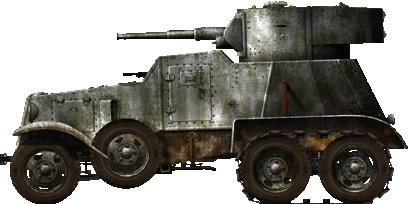
An illustration of a BA-6 armored car of the Imperial Russian Army in Alaska, circa 1938. The BA-6 was the Russian Forces in Alaska's most advanced armored fighting vehicle (which there were 10 of them in Alaska.) The remainder of their armored forces were made up of older D-12 (12), BAI-M (15), FAI-M (5), and BA-27 (12) armored cars.
The first opening moves of the Alaskan Front would in fact be made by the Union Forces, following about two months of calm on the front which would later be dubbed as the "Phoney War." On October 15th, 1941, the Union Army forces under General Lloyd Fredendall launched an attack into the South-Eastern portion of Alaska with the 18th and 21st Infantry and the 9th Mountain Divisions. At first, the Union Forces made some progress when they captured the settlement of Stakin along with the Marines capturing Chirikov Island* with little resistance and even fewer (around 15) casualties. However, the offensive would stall when the Union Army and Marines made an amphibious landing attempts at Mitkof and Kupreanof Islands, where the local Russian forces under General Lev Dovator. For about a month, the fighting on those two islands proved to be a stalemate until the Union forces there withdrew, with the cost of 544 men killed, 1,932 wounded, 31 captured, and 4 missing along with 24 field artillery pieces lost, 2 armored cars destroyed, 2 fighters and a bomber shot down, and the Destroyer USS Porter badly damaged by R-Z torpedo bombers.

Union Army troops during the Battle of Mitkof Island on Halloween of 1941.
Shortly after the Union withdrawal, General Antonov would order a counter-attack to the north, which had commenced on December 4th, 1941. The Russian counter-offensive would prove to be successful as they were able to reach as far as the shore of Kluane Lake in Yukon. Encouraged by this success, the Russians would launch another offensive to the south, where they made an attempt to retake the south-eastern tip of Alaska from the Yankees. They would successfully reverse most of Fredendall's successes by retaking all of the territory (expect for Chirikov Island.) Then their forces would cross into American Columbia, seizing a small strip of land on Alaska southeastern border. But their further advance would be halted by the Union Army's 9th Mountain Division during the Battle of Mount McLeod.

A photograph of soldiers from the Russian 107th Rifle Division attacking Union positions during the Battle of Mount McLeod on Christmas Eve, circa 1941.
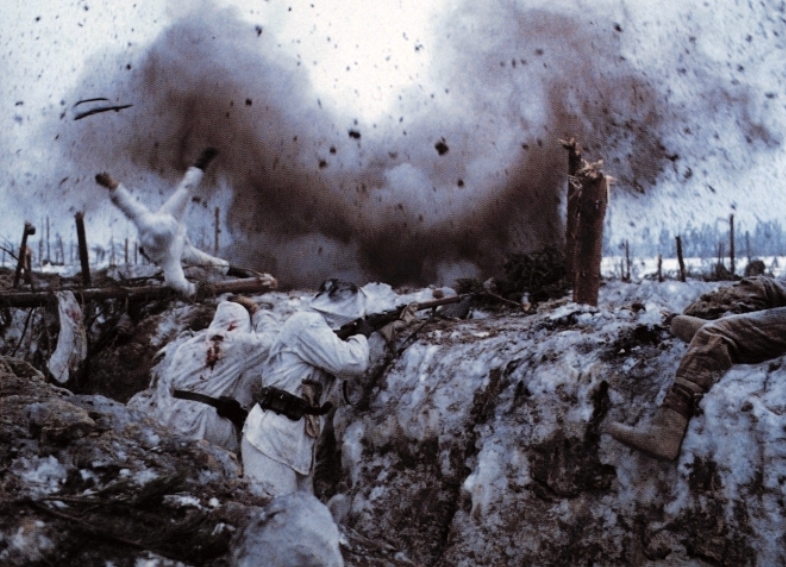
Union Army soldiers defending a trenchline near Clements Lake against an attacking Russian battalion. This was a still from a made for TV American movie about the Alaskan Front during the Second Great War called the Forgotten Front (1988).
Following the Battle of Mt. McLeod, the Russian Offensive would stall, by then, the Russians had have 954 men killed, 1,043 wounded, and 62 missing along with 6 armored cars and 19 aircraft destroyed. At this point, this would only prove to be just the beginning of a bloody side-show.
-----------------------------------------------------------------------------
* = OTL's Prince of Wales Island

A Union Soldier in his foxhole at a forward position in American Columbia near the border with Russian Alaska, circa 1941.
When the Second Great War commenced in North America, the Union High Command would strip many of their occupation forces from Canada to go fight the Confederate Forces in the South. However, there were a few regions of Canada where none of the Occupational Forces were stripped from such as American Columbia and the Yukon due to their proximity to Russian Alaska. Those regions would be immediately put under the Pacific Northwest Command with General Hugh Aloysius Drum as it's commander. Drum's forces were 87,000 US Army soldiers backed up an additional 12,000 US Marines 9,000 local Collaborationist Auxiliary Troops, 850 artillery pieces (much of them dating from the First Great War), 1,020 motor vehicles, 36 armored cars, 20 barrels (which were all M2A4 Light Barrels), 66 fighter aircraft (which were P-24 Hawk and the older P-16 Peashooter), 28 A-17 Nomad light bombers, and 16 coastal patrol aircraft of various types. The local naval forces in support with Task Force 36 under the command of Admiral Spruance had the new Battlecruiser USS Constellation, the heavy cruiser USS York, the light cruisers USS Saint Louis and Brooklyn, 13 destroyers, and 7 submarines.

In addition to the various ground forces, there were numerous coastal artillery batteries that were built following the Pacific War in order to protect the coastal regions of American Columbia, Vancouver Island, and Graham and Morseby Islands from a possible Japanese Invasion. Pictured here is a 14 inch gun from Fort Roosevelt on Vancouver Island, circa 1940.
Opposing the Union Military Forces was the Imperial Russian Forces of the so-called Alaskan Front commanded by General Alexi Antonov. By August of 1941, Antonov's forces had included about 105,000 troops, 761 artillery pieces, 896 motor vehicles, and 54 armored cars along with 54 fighter aircraft (which most of them were obsolete Polikarpov I-153 biplanes), 24 Polikarpov R-Z light bombers, and 12 Tupolev SB-2 bombers. The Russians would also have elements of it's Pacific Fleet based out of the port of New Archangelsk in Alaska with the heavy cruisers Pallada and Rynda, the light cruisers Oleg and Izumrud, 15 destroyers (six of which were new destroyers), and 12 submarines.

An illustration of a BA-6 armored car of the Imperial Russian Army in Alaska, circa 1938. The BA-6 was the Russian Forces in Alaska's most advanced armored fighting vehicle (which there were 10 of them in Alaska.) The remainder of their armored forces were made up of older D-12 (12), BAI-M (15), FAI-M (5), and BA-27 (12) armored cars.
The first opening moves of the Alaskan Front would in fact be made by the Union Forces, following about two months of calm on the front which would later be dubbed as the "Phoney War." On October 15th, 1941, the Union Army forces under General Lloyd Fredendall launched an attack into the South-Eastern portion of Alaska with the 18th and 21st Infantry and the 9th Mountain Divisions. At first, the Union Forces made some progress when they captured the settlement of Stakin along with the Marines capturing Chirikov Island* with little resistance and even fewer (around 15) casualties. However, the offensive would stall when the Union Army and Marines made an amphibious landing attempts at Mitkof and Kupreanof Islands, where the local Russian forces under General Lev Dovator. For about a month, the fighting on those two islands proved to be a stalemate until the Union forces there withdrew, with the cost of 544 men killed, 1,932 wounded, 31 captured, and 4 missing along with 24 field artillery pieces lost, 2 armored cars destroyed, 2 fighters and a bomber shot down, and the Destroyer USS Porter badly damaged by R-Z torpedo bombers.

Union Army troops during the Battle of Mitkof Island on Halloween of 1941.
Shortly after the Union withdrawal, General Antonov would order a counter-attack to the north, which had commenced on December 4th, 1941. The Russian counter-offensive would prove to be successful as they were able to reach as far as the shore of Kluane Lake in Yukon. Encouraged by this success, the Russians would launch another offensive to the south, where they made an attempt to retake the south-eastern tip of Alaska from the Yankees. They would successfully reverse most of Fredendall's successes by retaking all of the territory (expect for Chirikov Island.) Then their forces would cross into American Columbia, seizing a small strip of land on Alaska southeastern border. But their further advance would be halted by the Union Army's 9th Mountain Division during the Battle of Mount McLeod.
A photograph of soldiers from the Russian 107th Rifle Division attacking Union positions during the Battle of Mount McLeod on Christmas Eve, circa 1941.

Union Army soldiers defending a trenchline near Clements Lake against an attacking Russian battalion. This was a still from a made for TV American movie about the Alaskan Front during the Second Great War called the Forgotten Front (1988).
Following the Battle of Mt. McLeod, the Russian Offensive would stall, by then, the Russians had have 954 men killed, 1,043 wounded, and 62 missing along with 6 armored cars and 19 aircraft destroyed. At this point, this would only prove to be just the beginning of a bloody side-show.
-----------------------------------------------------------------------------
* = OTL's Prince of Wales Island
Last edited:

Malcolm Little, Black rights activist and formerly a Private in the US Army, photographed in 1957.
Little rose to prominence when he was in the Army during the Second Great War, when he, in a moment famous in US history, first raised the US flag over the ruins of the Confederate Congress building following the Battle of Richmond, with his famous declaration of "Reduce This!" as he impaled the US flag through the fallen Freedom Party banner becoming a rallying cry for Black Rights activists following the revelation of the full scale of the Freedom Party's atrocities. In the aftermath of the War, as the re-integration of the South began and race relations became an unavoidable issue, Little used his famous status in a series of powerful speeches in communities across the north, Culminating in a famous speech before the newly-built "Roosevelt Column" in Washington DC, where, in his famous "I Have Faith" speech, he called upon the leaders of the USA to "Live up to the Truths that are Self-Evident, that ALL MEN are created Equal."
Arguing for equality and integration rather than Black supremacy as other, more radical speakers had been since before the war, Little was a controversial figure in both white and black political circles. His rhetoric and attitude made him a target of white supremacists in both the north and the south, and several attempts were made on his life during the course of his time as a speaker. The last of these, in 1968, would be successful, as several Freedom Party Guards veterans would ambush Little and an entourage of followers outside their hotel in Memphis. Shot three times in the chest, Little would die the following morning, where the Coroner would famously proclaim "you people, Behold a Martyr."
His funeral in his home city of Omaha, Nebraska, was attended by over 15,000 people, among them Retired General Irving Morrell, then-General of the Army Micheal Pound and, to the surprise of many, former CSA intelligence chief Clarence Potter.
I like to imagine that this is a doppelgänger of Malcom X instead of a genetic variant in TL-191, due to the fact that while his mother was a Grenadian immigrant, his father would have been a Confederate Non-Citizen Resident in Georgia. They would have never met in this alternate timeline.
It's still a good story and I enjoyed it, Soundwave3591!
General History of Hawaii (The Sandwich Islands) in TL-191, 1862-1944
*Semi-short post with a few head-canon ideas.
_p104_Map_of_the_Hawaiian_or_Sandwich_Islands.jpg)
Map of the Hawaiian/Sandwich Islands in 1854
Beginning on August 26th, 1861, the Kingdom of Hawaii under King Kamehameha IV declared neutrality during the War of Secession. Initially, the Hawaiian government had sympathies with the Union but realized that it did not want to offend them by recognizing the CSA. Britain and France also remained neutral at the start of the war. However, that did not stop some Native Hawaiians and Hawaiian-Born Whites from joining the conflict. A plague was eventually dedicated to those individuals from Hawaii who fought during the American Civil War, another name for the War of Secession. The plaque remains a source of controversy due to allegations that some Hawaiians did fight for the Confederacy, but no evidence has yet emerged to corroborate it. The flag of pre-Featherston's Confederacy still arouses shock and anger to U.S. citizens.
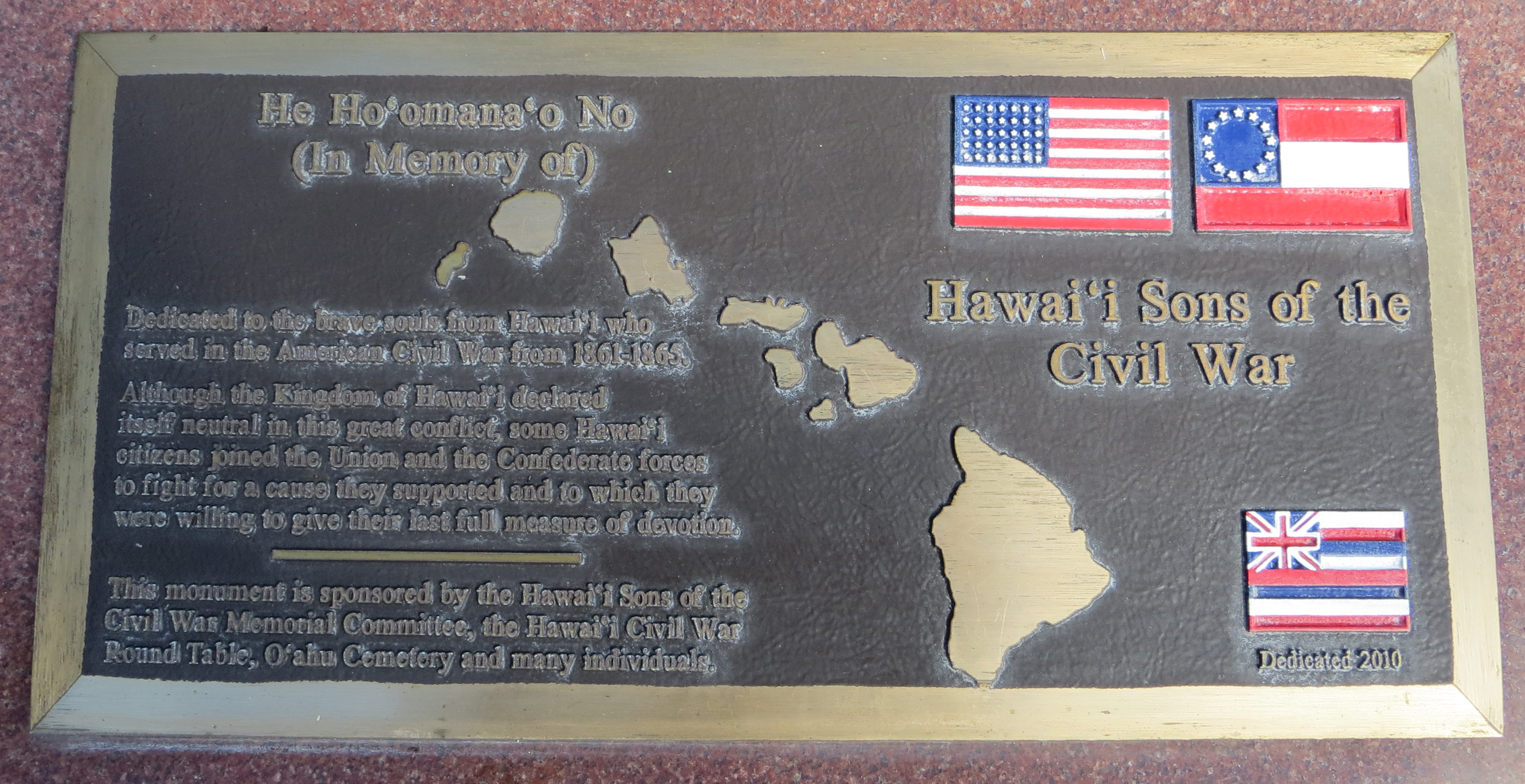
A flaw was detected in the plaque; the years of the War of Secession should read 1861-1862, not 1861-1865.
To this day, all Hawaiian volunteers that have been accounted for joined the Union. The most famous was Timothy Henry Hoʻolulu Pitman, who fought during the Second Battle of Manassas on August 28–30, 1862. Nearly three months later, the Battle of Philadelphia would end in a Confederate victory and the Confederacy was recognized by the British and French. Hawaii may not have admired the CSA due to its support of slavery, but Kamehameha IV eventually decided to imitate the diplomatic actions of Britain and recognized the new nation.
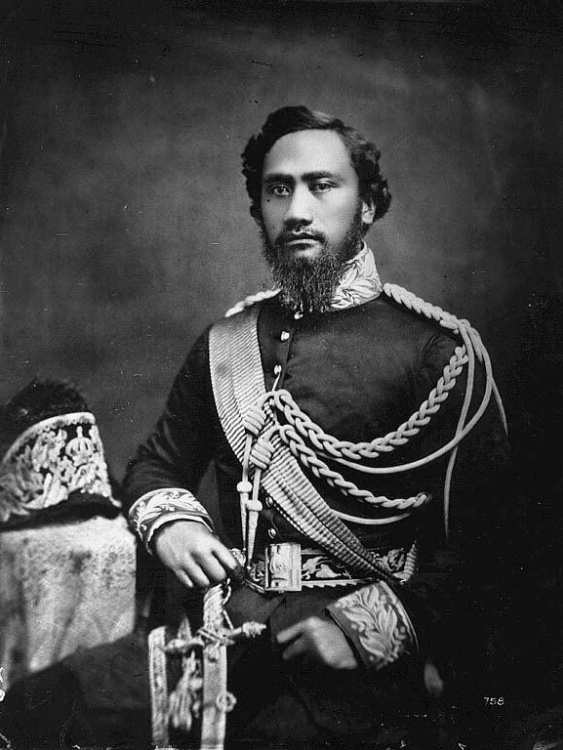
King Kamehameha IV (1855-1863)
Hawaii had many foreigners who wanted to establish their own influence on the island, especially from the Unionists and Confederates. Kamehameha IV wanted to limit his kingdom's dependence on these American nations and increase Hawaiian independence. He had begun to develop good diplomatic relations with the British until his death on November 30th, 1863 from Asthma.

King Kamehameha V (1863-1872)
His successor was his brother, Kamehameha V, who wrote a new constitution and increased the political power of Native Hawaiians. He also encouraged traditional Hawaiian practices, such as Kahunaism.
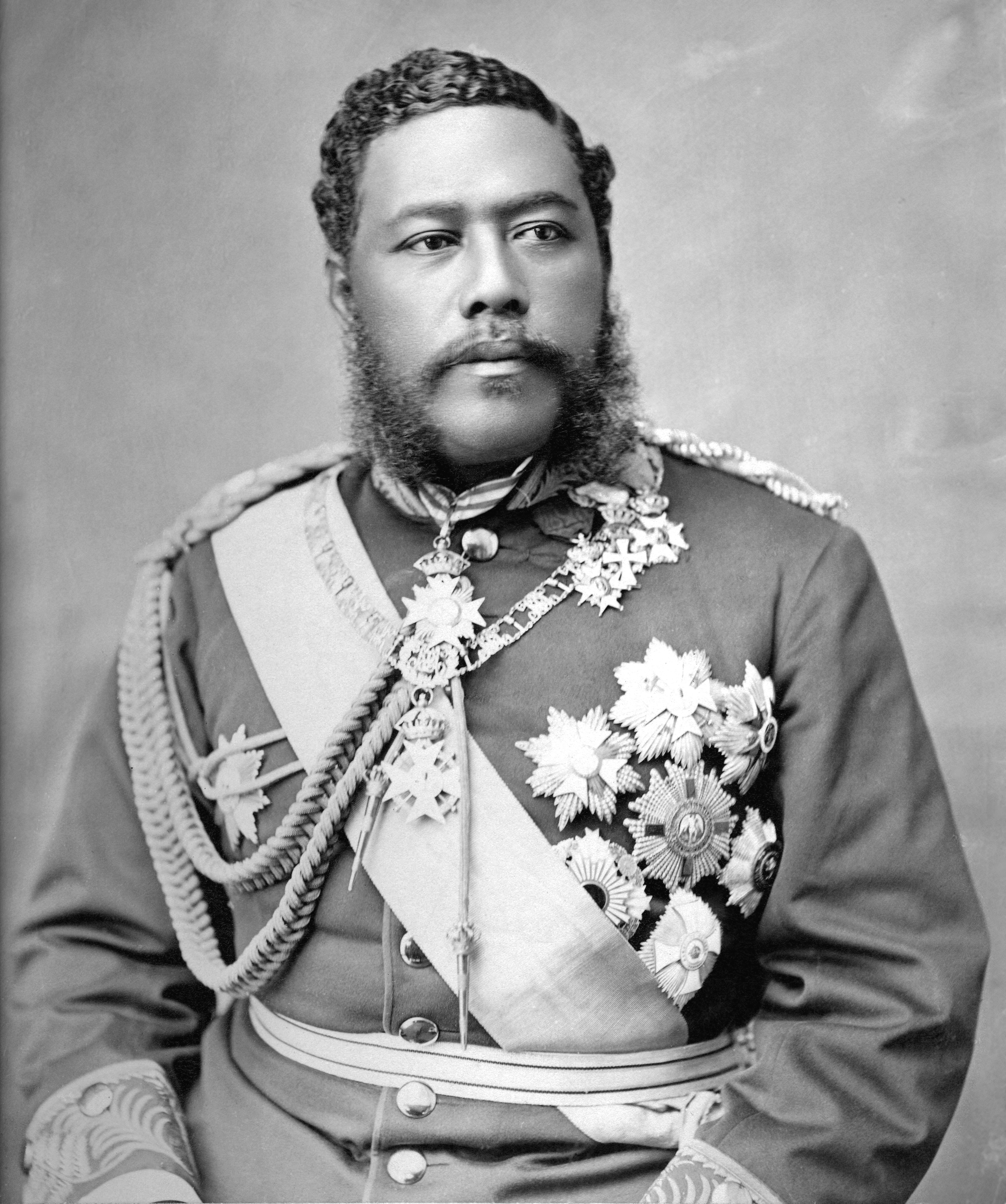
King Kalākaua (1874-1891)
After the death of King Lunalilo in 1874, Kalākaua became the second Hawaiian monarch to be elected as the King of Hawaii. The election was disputed by supporters of Queen Emma, wife of Kamehameha IV, who believed that she should be the rightful ruler of Hawaii. The dispute would later cause a riot and was put down by British, Unionist, and Confederate military forces who were allowed to be on the island. A treaty was ratified in 1875 that allowed Hawaii to not have import taxes on goods going into the United Kingdom. Initially, the treaty was going to be between Hawaii and the United States, but the king was eventually convinced that it would be better to negotiate with the British. The Hawaiians gave Pearl Harbor to the British in return.
By 1881, there was growing tension between the British, Union, and Confederates. When the Union attacked Confederate territory during the Battle of the Cimarron River (Custer's Raid), the British kicked out Union forces on the island and used it as a launch pad to attack the western coast of the United States. While Hawaii was never technically a British colony (there was an attempt), it has chosen to be strongly associated with the British.

American Ships near Hawaii during the end of the Battle of Pearl Harbor
More than thirty years later, the First Great War began and put the United States against the British Empire. The Battle of Pearl Harbor occured in August of 1914 for control of Hawaii. However, the British would lose to the United States. An attempt to regain the islands occurred during the Battle of the Three Navies southwest of Hawaii, but that battle would also end in a U.S. victory in 1916.

The Last Queen of Hawaii, Liliʻuokalani, who reigned from 1891- 1917
The Hawaiian Queen Liliʻuokalani was deposed and exiled to a British merchant ship. Hawaii was, for some reason, renamed the "Sandwich Islands" and became an American territory. To this day, there still exists a sovereignty movement of varying popularity that demands the U.S. government to grant them Hawaiian independence. The current pretender to the Hawaiian throne has mixed feelings on the issue, but enjoys being an American citizen.

Painting of American Ships stationed in Hawaii against potential Japanese attacks, ca. 1942
The next major, significant conflict that the Sandwich Islands experienced was during the Second Great War, although it played a defensive role from Japanese attacks. In secret, it was in the Sandwich Islands that a plan was schemed by American officials for the Japanese to stop fighting. Eventually, a conference occurred in Montreal between American and Japanese officials for a cease-fire, in exchange for Japanese conquest and control of the Asian Pacific, in order to keep Russia, Britain, and France busy.
Sources:
https://www.nps.gov/civilwar/upload...s-in-the-Civil-War-Alphabetically-by-Name.pdf
http://the.honoluluadvertiser.com/article/2010/May/31/ln/hawaii5310346.html
Why is the British Flag on the Flag of Hawaii?
https://evols.library.manoa.hawaii.edu/bitstream/handle/10524/495/JL14054.pdf?sequence=2
https://www.naval-encyclopedia.com/ww1/naval-battles
http://hamptonroadsnavalmuseum.blogspot.com/2014/07/the-return-of-mayflower-by-bernard.html
*Semi-short post with a few head-canon ideas.
_p104_Map_of_the_Hawaiian_or_Sandwich_Islands.jpg)
Map of the Hawaiian/Sandwich Islands in 1854
Beginning on August 26th, 1861, the Kingdom of Hawaii under King Kamehameha IV declared neutrality during the War of Secession. Initially, the Hawaiian government had sympathies with the Union but realized that it did not want to offend them by recognizing the CSA. Britain and France also remained neutral at the start of the war. However, that did not stop some Native Hawaiians and Hawaiian-Born Whites from joining the conflict. A plague was eventually dedicated to those individuals from Hawaii who fought during the American Civil War, another name for the War of Secession. The plaque remains a source of controversy due to allegations that some Hawaiians did fight for the Confederacy, but no evidence has yet emerged to corroborate it. The flag of pre-Featherston's Confederacy still arouses shock and anger to U.S. citizens.
A flaw was detected in the plaque; the years of the War of Secession should read 1861-1862, not 1861-1865.
To this day, all Hawaiian volunteers that have been accounted for joined the Union. The most famous was Timothy Henry Hoʻolulu Pitman, who fought during the Second Battle of Manassas on August 28–30, 1862. Nearly three months later, the Battle of Philadelphia would end in a Confederate victory and the Confederacy was recognized by the British and French. Hawaii may not have admired the CSA due to its support of slavery, but Kamehameha IV eventually decided to imitate the diplomatic actions of Britain and recognized the new nation.

King Kamehameha IV (1855-1863)
Hawaii had many foreigners who wanted to establish their own influence on the island, especially from the Unionists and Confederates. Kamehameha IV wanted to limit his kingdom's dependence on these American nations and increase Hawaiian independence. He had begun to develop good diplomatic relations with the British until his death on November 30th, 1863 from Asthma.

King Kamehameha V (1863-1872)
His successor was his brother, Kamehameha V, who wrote a new constitution and increased the political power of Native Hawaiians. He also encouraged traditional Hawaiian practices, such as Kahunaism.

King Kalākaua (1874-1891)
After the death of King Lunalilo in 1874, Kalākaua became the second Hawaiian monarch to be elected as the King of Hawaii. The election was disputed by supporters of Queen Emma, wife of Kamehameha IV, who believed that she should be the rightful ruler of Hawaii. The dispute would later cause a riot and was put down by British, Unionist, and Confederate military forces who were allowed to be on the island. A treaty was ratified in 1875 that allowed Hawaii to not have import taxes on goods going into the United Kingdom. Initially, the treaty was going to be between Hawaii and the United States, but the king was eventually convinced that it would be better to negotiate with the British. The Hawaiians gave Pearl Harbor to the British in return.
By 1881, there was growing tension between the British, Union, and Confederates. When the Union attacked Confederate territory during the Battle of the Cimarron River (Custer's Raid), the British kicked out Union forces on the island and used it as a launch pad to attack the western coast of the United States. While Hawaii was never technically a British colony (there was an attempt), it has chosen to be strongly associated with the British.
American Ships near Hawaii during the end of the Battle of Pearl Harbor
More than thirty years later, the First Great War began and put the United States against the British Empire. The Battle of Pearl Harbor occured in August of 1914 for control of Hawaii. However, the British would lose to the United States. An attempt to regain the islands occurred during the Battle of the Three Navies southwest of Hawaii, but that battle would also end in a U.S. victory in 1916.

The Last Queen of Hawaii, Liliʻuokalani, who reigned from 1891- 1917
The Hawaiian Queen Liliʻuokalani was deposed and exiled to a British merchant ship. Hawaii was, for some reason, renamed the "Sandwich Islands" and became an American territory. To this day, there still exists a sovereignty movement of varying popularity that demands the U.S. government to grant them Hawaiian independence. The current pretender to the Hawaiian throne has mixed feelings on the issue, but enjoys being an American citizen.
Painting of American Ships stationed in Hawaii against potential Japanese attacks, ca. 1942
The next major, significant conflict that the Sandwich Islands experienced was during the Second Great War, although it played a defensive role from Japanese attacks. In secret, it was in the Sandwich Islands that a plan was schemed by American officials for the Japanese to stop fighting. Eventually, a conference occurred in Montreal between American and Japanese officials for a cease-fire, in exchange for Japanese conquest and control of the Asian Pacific, in order to keep Russia, Britain, and France busy.
Sources:
https://www.nps.gov/civilwar/upload...s-in-the-Civil-War-Alphabetically-by-Name.pdf
http://the.honoluluadvertiser.com/article/2010/May/31/ln/hawaii5310346.html
Why is the British Flag on the Flag of Hawaii?
https://evols.library.manoa.hawaii.edu/bitstream/handle/10524/495/JL14054.pdf?sequence=2
https://www.naval-encyclopedia.com/ww1/naval-battles
http://hamptonroadsnavalmuseum.blogspot.com/2014/07/the-return-of-mayflower-by-bernard.html
Last edited:
In the manner of this series, I sort of amalgamated Malcolm X and MLK into one character, and his being from Nebraska allowed his placement in the USA. He was also in the appropriate age bracket to end up in the army during this time.I like to imagine that this is a doppelgänger of Malcom X instead of a genetic variant in TL-191, due to the fact that while his mother was a Grenadian immigrant, his father would have been a Confederate Non-Citizen Resident in Georgia. They would have never met in this alternate timeline.
It's still a good story and I enjoyed it, Soundwave3591!
Originally this was just going to be a "wouldn't it be a delightful Historical Easter Egg if Malcolm X was the one to do the "Reichstag flag" equivalent in TL191?" But I decided to go further and evoke both his own and MLK's work as a speaker and caller for change.
Now for some Post-War images of the Union (now US) Military
A US Army mortarman wearing an experimental desert camouflage uniform, circa 1982.
=================================================================
* = Following the collapse of the Russian Empire in the late 1940s, Alyaska would become an independent nation in 1948. In 1956, with the fear of Japanese Imperial Expansion in the North Pacific, the Tsardom of Alyaska would form a defense pact with the United States.
Where did you find this picture of a Black man wearing what appears to be a Stahlhelm? I like it a lot.
Oh, and I want to thank you for giving Alaska their independence.
He is a Spanish Legionnaire from the 1980s OTL.Where did you find this picture of a Black man wearing what appears to be a Stahlhelm? I like it a lot.
Oh, and I want to thank you for giving Alaska their independence.
Share:
